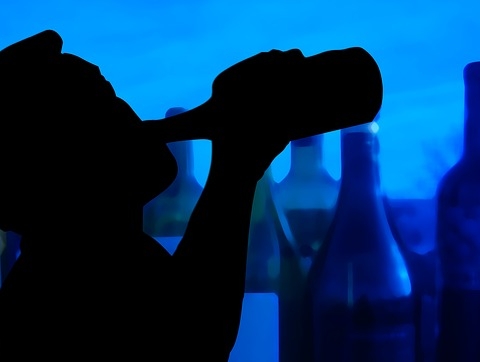Hair Strand Drug Testing
What is Hair Strand Drug Testing?
Hair strand drug testing is the process of analysing a sample of the hair to detect for evidence of drug consumption. The test is most commonly used to assist with evidence in family law and child care cases. It is also used by various authorities to monitor sportsmen and employees.
How does Hair Strand Drug Testing Work?
When a drug enters the blood stream, traces of the substance are transported to the hair follicles. These are the tubular cavities that surround the hair shafts and generate hair growth. As the hair grows, these traces are then also incorporated into the hair shafts. Drug testing experts can therefore analyse samples of the hair to detect for the presence of drugs.
[wp_ad_camp_1]
For more reliable confirmation, drug testing experts also look for traces of the drug’s metabolites. These metabolites are the by-products produced by the breakdown of the drug in the body and as specific metabolites are produced per specific drug, they help to provide a direct picture of usage.
Hair grows at 1cm a month so a 3cm sample of hair can show evidence of drug use for 3 months.
What are the Methods of Hair Strand Drug Testing?
A hair sample can be analysed for the presence of drugs in two different ways:
- Segmentation Analysis
If the hair sample is sectioned into separate 1cm samples then the drug testing experts can derive a separate result per month. So, for example, if a 3cm section of hair underwent segmental analysis, the result would be 3 separate readings for each month represented by the sample. The segmental analysis method is preferential for discovering trends in drug use, such as an increase or decrease in consumption or one-off instances.
- Overview Analysis
An overview analysis provides one result for the whole period of time represented by a 3cm sample of hair. So, if a 6cm section of hair underwent testing, there would be 2 results – one to represent each 3 month period. The overview analysis is preferential if the test is only required to indicate the presence or absence of a drug.
What Time Period Can Hair Strand Drug Testing Cover?
As the hair needs to grow for a sample to be cut away, hair strand drug testing cannot be carried out until approximately 2 weeks after the time of drug use. If more immediate testing is required then a sample of saliva or urine is more effective. Depending on the length of hair available and the time between consumption and the test, a hair strand drug test can show evidence of drug use for up to 12 months.
What Drugs can be Detected with Hair Strand Drug Testing?
Most common types of prescription and illegal drugs can be detected with a hair strand drug test. These include amphetamines, antidepressants, morphine, cocaine, heroin, LSD, codeine, opiates, tramadol, ecstacy and ketamine.
What are the Advantages of Hair Strand Testing?
- Much longer window of detection than any other type of drug test
- Non-invasive collection
- Ability to show trends in drug use with segmental analysis
Hair Strand Alcohol Testing
What is Hair Strand Alcohol Testing?
Hair strand alcohol testing analyses a sample of hair to detect for the persistent consumption of alcohol. Like drug testing, hair alcohol testing is used in family law proceedings and by authorities testing employees. Unlike drug testing, hair alcohol testing does not analyse for traces of the substance but only for the resulting metabolites (by-products).
How does Hair Strand Alcohol Testing Work?
Hair strand alcohol testing works on the same premise of drug testing. That being that the metabolites of alcohol are incorporated into the hair follicle and then into the hair strand.
How Does Hair Strand Alcohol Testing Work?
Hair strand alcohol testing detects for the presence of two different by-products of alcohol consumption. These are Fatty Acid Ethyl Esters and Ethyl Glucuronide. FAEEs are incorporated into the hair follicle via sebum produced by the glands and ETG is incorporated via the body’s sweat.
Hair samples can be analysed for evidence of either of these by-products in isolation but when evidence of both is detected, this provides stronger confirmation of chronic alcohol consumption.
What Time Period can Hair Strand Alcohol Testing Cover?
Unlike hair strand drug testing, hair samples for alcohol testing cannot be analysed with a segmental test. The test can either provide a result for the past 3 months or the past 6 months, analysing either the 3cm or the 6cm strand of hair in overview. Like with hair drug testing, a 3cm section of hair represents 3 months. And also as with hair drug testing, the test cannot be carried out until the hair has grown long enough for a sample to be cut away.
What are the Advantages of Hair Strand Alcohol Testing?
The advantages of hair strand alcohol testing are mostly the same as that for hair strand drug testing:
- Longer window for detection than a urine or blood test
- Non-invasive sample collection
What are the Disadvantages of Hair Strand Alcohol Testing?
Alcohol metabolites are much more susceptible to tampering than drug metabolites. This is because ETG is soluble in water and FAEEs are sensitive to hair treatments. This means, excessive shampooing and hair colorants can remove the traces of alcohol from the hair strands to cause a false-negative result.






